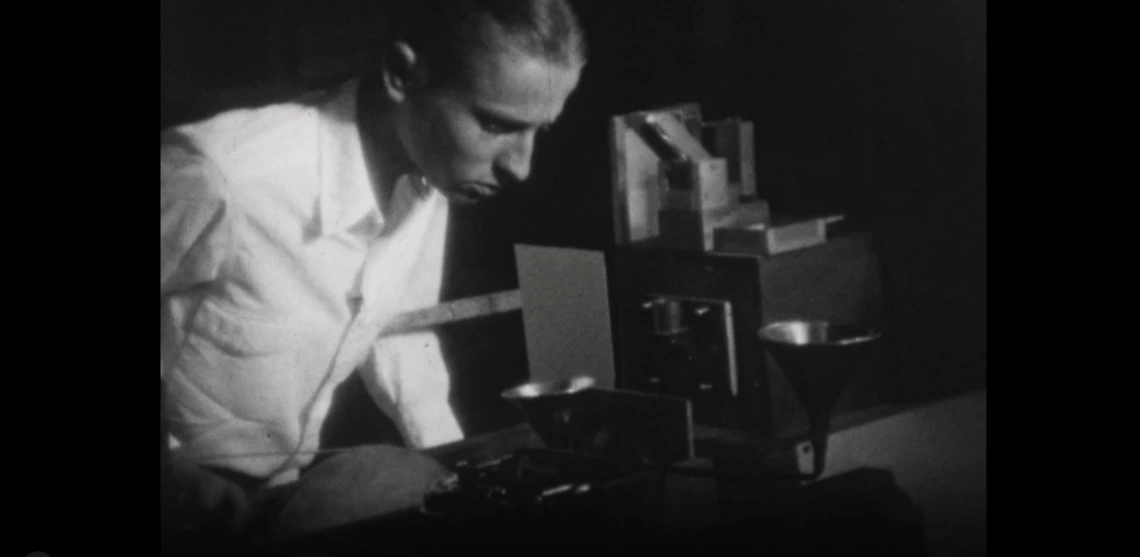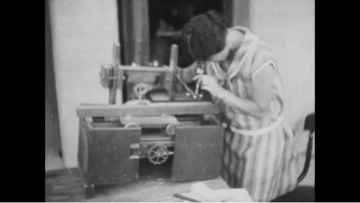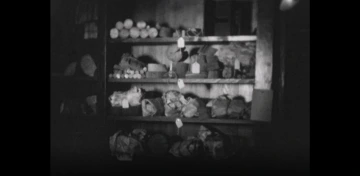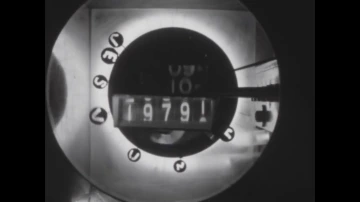Digitizing scientific study films uncovers innovations from the 1930s

A film clip demonstrates the cycloscope, which allows simultaneous visual comparison of multiple tree ring cycle plots.
Here's the third story in a series about the Andrew Ellicott Douglass films digitization project funded by the Council on Library and Information Resources Recordings at Risk grant. Douglass, a University of Arizona professor, was the founder of the Laboratory of Tree-Ring Research.
The co-principal investigators, Assistant Librarian and Archivist Trent Purdy and Archival Assistant Amanda Howard, continue to share updates in their own words about what it's like to preserve films that are nearly 100 years old.
Factoring in quality control

We recently received a hard drive containing project deliverables which includes XML metadata records and master and access video files of the original motion picture films.
In this stage of the project, we perform quality control on the files. We have included an amuse-bouche of three of the 88 films that were digitized.
This is a time-consuming process that requires extreme attention to detail, but is essential to long-term preservation, as well as researcher discovery of these one-of-a-kind materials. This process includes, amongst other things, ensuring that all project materials are digitized and checking metadata records for accuracy.
We also watch portions of the motion picture master and access files, which is a thrilling experience for us!
Using an interdisciplinary approach

While a succinct summary of the precise science is beyond our expertise as archivists, Douglass and the Tree-Ring Lab were essentially using tree rings to track sunspots and climatic changes across centuries, as seen in this film from about 1929.
Comparing tree specimens from locations across Arizona against wood beams from archaeological sites also allowed Douglass and his team to accurately date when the sites were constructed.
In the 1930s and into the 1950s, chronicling scientific study through amateur filmmaking was still in its relative adolescence. So, even as Douglass was gathering and recording information through tree cores, panoramic chronologies, and cycleplots, he was simultaneously documenting his tools and methods of analysis with his home movie camera.
Integrating innovative technology

It’s still unclear whether Douglass used these films in the courses he taught, shared them with colleagues in conference presentations, or bored unlucky dinner party guests.
What is known is that he was using every cutting-edge instrument at his disposal to record his groundbreaking findings for posterity. In his 60s, 70s and 80s--when most academics would have been enjoying retirement--Douglass was still perfecting and innovating within his disciplines.
It’s mindboggling to imagine what Douglass and his team would’ve been doing now with just laptops and Excel, not to mention data visualization, VR, iPhone cameras, and Twitter. There are dozens of more films that will be available in our upcoming online exhibit. They show not only Douglass at work, but Tucson, the broader desert Southwest, the Pacific coast, and places further afield almost a century ago.
Stay tuned for another update this fall and read other stories in this series:
Special Collections awarded grant to digitize Andrew Ellicott Douglass films
Preserving films from the 1930s takes time

The Council on Library and Information Resources (CLIR) is an independent, nonprofit organization that forges strategies to enhance research, teaching and learning environments in collaboration with libraries, cultural institutions, and communities of higher learning. It administers the Recordings at Risk grant program, which supports the preservation of rare and unique audio, audiovisual and other time-based media of high scholarly value through digital reformatting. The program is made possible by funding from The Andrew W. Mellon Foundation.
